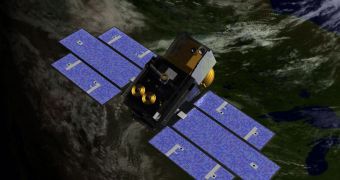Officials at the American space agency announce that the NASA Ice, Cloud, and land Elevation (ICESat) satellite will burn up in the Earth's atmosphere tomorrow, after having completed its long-term mission successfully.
The mission was finished this year, experts say, and the spacecraft has already been boosted to a terminal orbit. It is expected that its decay will force ICESat to start burning up in the atmosphere tomorrow, August 29.
NASA representatives say that they are very sorry they need to decommission the satellite, which has until now provided highly-detailed observations of the Earth from its orbital perch.
The goal of the mission was to study the polar regions of the planet, for a total of 5 years starting in 2003. This was the first mission of its kind ever to be launched by NASA.
Its main instrument was a space-based laser altimeter called the Geoscience Laser Altimeter System (GLAS). This allowed us to gather a better understanding of ice sheet and sea ice dynamics.
According to Space Fellowship, this particular satellite contributed extensively to creating accurate measurements of the ice sheets covering Greenland and the Antarctic.
It was also used to measure polar sea ice thickness, the height of vegetation canopies, as well as the type of aerosols presented in the atmosphere. Keeping an eye on the height of clouds was also one of the main objectives the mission had.
“ICESat has been a tremendous scientific success. It has provided detailed information on how the Earth’s polar ice masses are changing with climate warming, as needed for government policy decisions,” explains Jay Zwally.
The expert was a project scientist foe the ICESat. He holds an appointment at the NASA Goddard Space Flight Center (GSFC) in Greenbelt, Maryland.
“In particular, ICESat data showed that the Arctic sea ice has been rapidly thinning, which is critical information for revising predictions of how soon the Arctic Ocean might be mostly ice free in summer,” he explains futher.
“It has also shown how much ice is being lost from Greenland and contributing to sea level rise. Thanks to ICESat we now also know that the Antarctic ice sheet is not losing as much ice as some other studies have shown,” he adds.
“The ICESat team has done a marvelous job to ensure that the spacecraft is removed as a hazard to other spacecraft and as a potential source of future orbital debris,” says the NASA Chief Scientist for Orbital Debris, Nicholas L. Johnson

 14 DAY TRIAL //
14 DAY TRIAL //